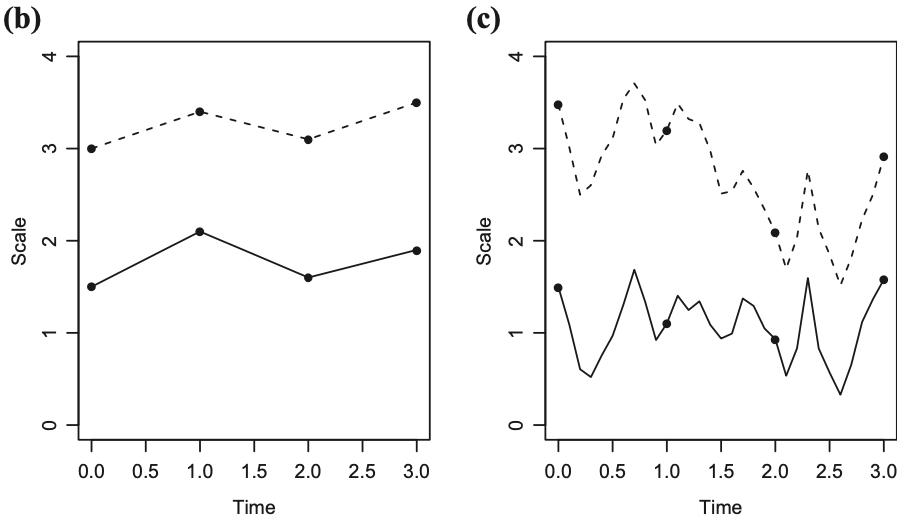Effective interventions may not be limited to changing means, but instead may also include changes to how variables affect each other over time. Continuous time models offer the opportunity to specify differing underlying processes. A substantive example compares models that imply different underlying continuous time processes using panel data.
Abstract
Many interventions are characterized by repeated observations on the same individuals (e.g., baseline, mid-intervention, two to three post- intervention observations), which offer the opportunity to consider differences in how individuals vary over time. Effective interventions may not be limited to changing means, but instead may also include changes to how variables affect each other over time. Continuous time models offer the opportunity to specify differing underlying processes for how individuals change from one time to the next, such as whether it is the level or change in a variable that is related to changes in an outcome of interest. After introducing continuous time models, we show how different processes can produce different expected covariance matrices. Thus, models representing differing underlying processes can be compared, even with a relatively small number of repeated observations. A substantive example comparing models that imply different underlying continuous time processes will be fit using panel data, with parameters reflecting differences in dynamics between control and intervention groups.
Citation
Deboeck, P. R., Cole, D. A., Preacher, K. J., Forehand, R. & Compas, B. E. (2021). Modeling Dynamic Processes with Panel Data: An Application of Continuous Time Models to Prevention Research. International Journal of Behavioral Development, 45(1), 28–39. doi: 10.1177/0165025420905354
